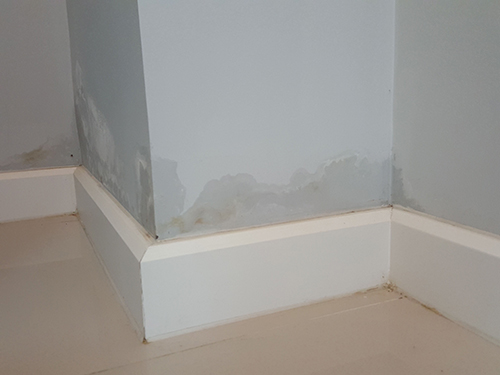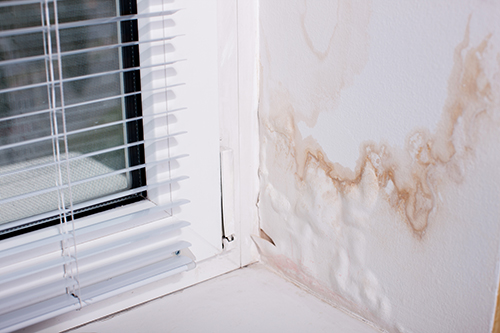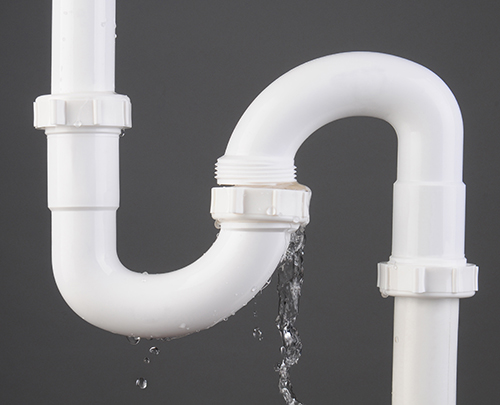Preventing damp and black mould
Many people experience damp and black mould in the home at some point. Even in warm, well looked after properties mould can grow in certain spots, especially in cold weather.
Mould is most likely to occur because of dampness as a result of condensation, which is usually caused by a combination of three things: moisture from the humid air of daily life from cooking and washing, together with insufficient heating and ventilation.
Less commonly, the dampness can be as a result of moisture coming from a maintenance problem, such as rain getting in or faulty plumbing. There's advice on those problems at the bottom of this page too.
Tackling condensation to prevent damp and black mould takes ventilation, dryness and warmth.
Contents
- Damp & Mould - The Movie.
- Ventilation, Dryness, Warmth.
- Dealing with mould.
- Damp that isn’t ordinary condensation.
Damp & Mould - The Movie
Our energy advice partners, Act on Energy, have made a short video on tackling damp and mould issues.
Ventilation
Air is wet! That wetness in the air, called humidity, is the source of condensation. It condenses out of the air into droplets of liquid water when the air meets colder surfaces. That water is condensation and it is the cause of most damp and mould in the home.
Let warm, humid air escape
To help fight this, let warm, wet air out. This helps removes the moisture. Letting warm wet air escape from the home, usually through an extractor fan, cracked open windows, and any other kind of air vent, is ventilation.
Letting warm air out can seem like a waste of good heat, but it’s essential to prevent damp and mould because that air contains the moisture that will become condensation. Even in the most well-looked after homes, mould will grow where there isn’t enough ventilation - for example where air cannot circulate, such as behind furniture that’s against walls or in corners.
Tip: Drier home = cheaper heat.
When you put the heating on, you also have to heat up any moisture that's in the air. The wetter the air is, the more heating and the longer it takes to reach temperature, which costs you more money. Drier air is cheaper to heat.
When to ventilate
Ventilation that lets warm humid air out, such as opening a window or turning on an extractor fan, isn’t always required at all times. It is vital to remove any build-ups of warm humid air, however.
- Kitchens and bathrooms: ventilate during use and for a short time afterwards.
- Bedrooms: ventilate for up to an hour after rising. Turn back bedding to air out.
- Furniture: leave ventilation gaps to the walls, especially colder external walls, so air can circulate.
- Chimneys and air vents: don’t block them up so they will help with ventilation.
Dryness
You can’t prevent all moisture in your home, because it’s caused by everyday life. The average person produces at least two and a half litres (five pints) of water as water vapour every day. But the amount of moisture can be cut significantly with some simple actions.
Wipe off condensation
Wipe condensation off wet surfaces like windows and windowsills every morning, particularly in colder weather. Don’t leave it, as it will evaporate back into the air again to cause more condensation later and, over time, damage the wet area too.
Wring the water out down the sink.
Shut the door...
Kitchens and bathrooms produce a lot of moisture. Closing the door will help keep that moisture in that room, which you can ventilate more easily through an open window or extractor fan. Keep ventilating the room for a short while after you’re finished in there, to give the humid air enough time to escape.
To cut down moisture cover pans with lids while cooking, and dry your towels like clothes (see the next section), along with tea towels once you’ve dried up.
…especially if drying clothes inside
Drying clothes can produce more moisture than anything else. If you can’t dry your clothes outside, and don’t have a condensing or externally-vented tumble dryer, then dry them in a ventilated bathroom with the door closed.
Warmth
A home that’s too cold will be more prone to condensation and damp, because more moisture will condense out of the air onto colder walls, windows, and other surfaces.
Tip: Help with household costs is available.
A range of cost of living support may be available to you, including financial support, expert advice, and more.
Heating
It’s better to have lower heating on for longer periods than higher heating on for shorter periods but with cold in between. You’ll get less condensation that way.
Radiator control thermostats and heating timers can help achieve this at lower cost.
Tip: Avoid bottle gas heaters.
They give off lots of moisture, up to two litres (four pints) a day on average, and they’re more expensive to run!
Insulation
At least 25cm (10 inches) of loft insulation, double glazing, draught excluders, and wall insulation where possible all help with warmth.
Open curtains in the day for some warmth even from a weak sun, but shut them at night for more insulation.
Tip: Energy advice is available
The council provides a free, impartial energy advice service to you, delivered for us by Act on Energy who made the video at the top of this page. You may also be able to get financial support to improve insulation and other things in your home. Find details on our cost of living page.
Dealing with mould
Mould grows from spores, which are invisible and everywhere. When mould has enough food and water and is left undisturbed, it will grow and multiply and eventually become visible as black mould on walls, ceilings, furnishings, even on clothes and toys.
The key to reduce mould growth is ventilation, dryness and warmth, as above.
If mould starts to appear, then as soon as possible:
- Remove the mould.
Remove it carefully without spreading spores, by wiping it off with a damp cloth. Vacuum the spot and empty the vacuum. Never brush mould off, as that will release many spores into the air. - Kill the mould that’s left.
Wipe down the area with a fungicide (mould killer) or diluted bleach. Don’t forget your rubber gloves and safety glasses. - Redecorate with fungicides.
Redecorate the area using special fungicidal paint or wallpaper paste. Don’t use ordinary paint or paste, as that won’t help prevent mould from coming back and can even feed it.
Mould on fabrics
Once fabrics get mouldy, they require thorough cleaning. Dryclean mouldy clothes, and shampoo mouldy carpets.
Tip: Tea tree oil is a natural fungicide.
Try four drops in 2l of water (warm or cold). Spray on, then wipe off, rinse and dry. You can even soak mouldy items. Always test on a small area first.
Damp that isn’t ordinary condensation
There are other kinds of damp, all far less common than ordinary condensation, which are caused by maintenance problems that need attention. If left untreated, they can damage the property in other ways in addition to damp and mould.
In all cases, the problems should be repaired so that the source of the moisture is removed.
Tip: Is it a maintenance problem?
Renting your home? If you believe you have damp and mould as a result of a maintenance problem (such as leaking gutters or pipes) that you have reported it to your landlord and they have not dealt with it in a reasonable time, then you may be able to complain. We can help you complain if you rent from the council or if you rent privately.
If you rent from a housing provider, you will need to contact your housing provider.
Rising damp
- Affects: ground levels and basements.
- Looks like: a ‘tide mark’ 300-600mm (one to two feet) up above ground level, often leaving white salts on the wall. Usually too salty for black mould to grow. Tends to be present all year round but is more noticeable in winter.
- Caused by: water rising from the ground and soaking up through the bricks, because the damp proof course (a waterproof membrane in the walls of most buildings) is damaged or missing.

Penetrating damp
- Affects: external walls and ceilings.
- Looks like: an obviously defined ‘damp patch’ that will look and feel damp, which is far more noticeable after rain. Usually too wet for black mould to grow.
- Caused by: water getting in from the weather outside through a missing roof tile, worn brickwork or cracked rendering, or a faulty window.

Defective plumbing
- Affects: any wall or ceiling, more common around bathrooms and kitchens.
- Looks like: a patch that looks and feels damp to the touch, which will be damp even when it hasn’t rained. Usually too wet for black mould to grow.
- Caused by: leaks from faulty water services like pipes, gutters and seals around baths, showers and sinks. Usually easily discovered by a check of the plumbing.

Feedback & Share
Share this page on social media
